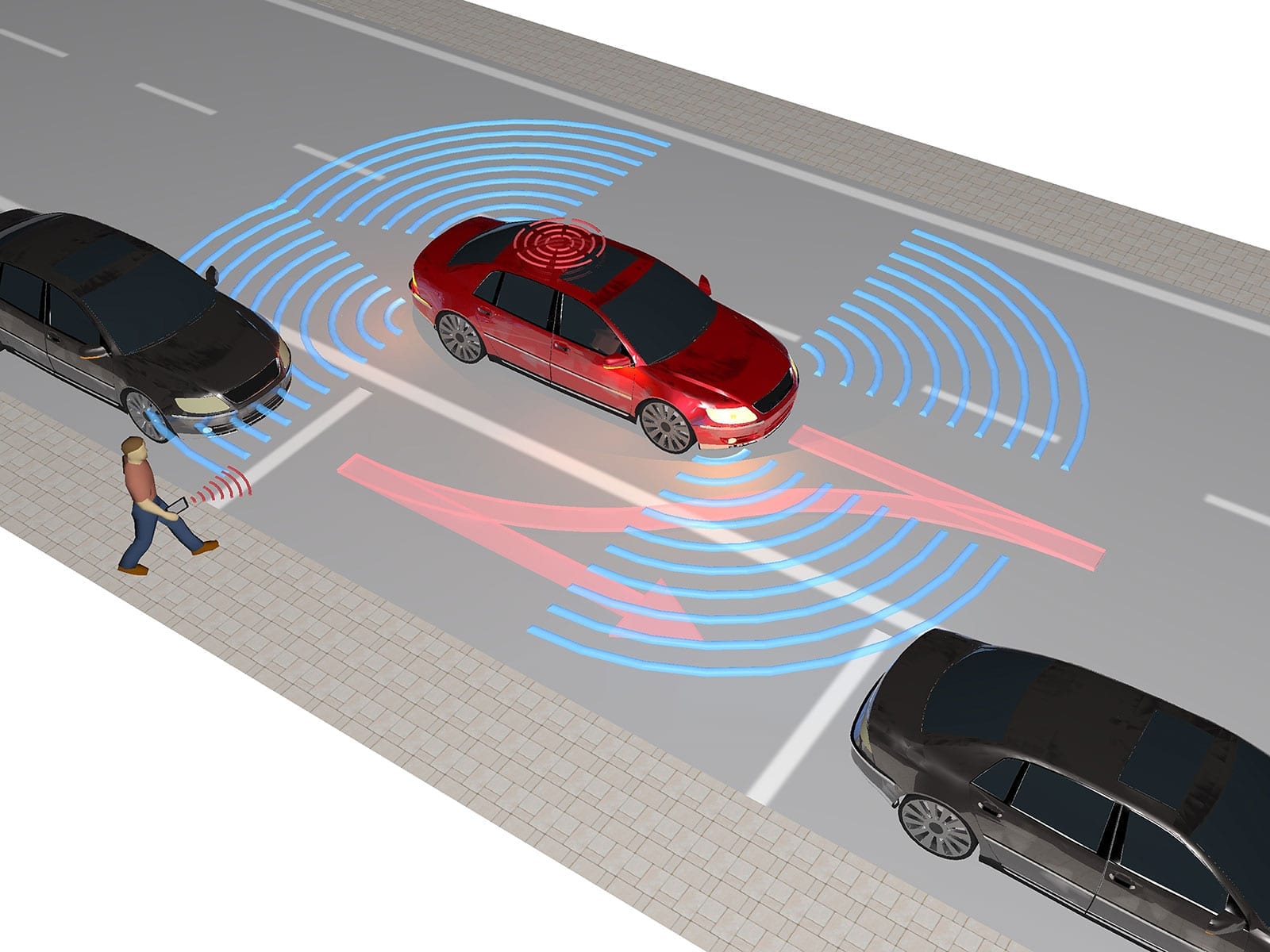
Credit: EasyMile
A new type of driverless shuttle vehicle has been developed thanks to innovative computer vision guidance technology that enables the vehicle to locate itself on a roadway reliably and inexpensively.
The technology, which is based on the use of simple video cameras, was developed by researchers at Institut Pascal (CNRS/Université Blaise Pascal de Clermont Ferrand/IFMA). It lies at the heart of the EZ-10 autonomous shuttle vehicle developed by Ligier Group, which will be unveiled at the Michelin Challenge Bibendum in Chengdu (China) from 11 to 14 November 2014.
Since the 2000s, a number of companies have sought to make cars autonomous using expensive and sometimes unreliable technologies. In 2003, researchers at Institut Pascal decided to work on automated driving of urban electric vehicles using simple video cameras. The technology they developed is based on two stages. The aim of the first stage is to identify all the significant points in the immediate environment of the path followed, in a video recorded during an initial journey in which the vehicle is driven manually.
The second stage corresponds to the automatic mode during which the vehicle continuously monitors its path, ensuring that the images provided by the on-board cameras correspond as far as possible to the sequence initially filmed. The initial video thus plays the role of a virtual track that the vehicle must follow when it travels in autonomous mode.
Since 2006, the researchers at Institut Pascal, in collaboration with Ligier Group, have been developing automatic driverless shuttle vehicles that can transport up to 10 people along short routes (in the region of one kilometer), rather like a horizontal elevator. The vehicles, which are designed to be used at specific sites such as industrial sites, airports and amusement parks, are able to deal with obstacles thanks to laser rangefinders fitted on all four sides of the vehicle. The shuttle vehicle can detect the presence of an obstacle at a distance of 50 meters and in this way modify its speed or even stop, depending on the potential danger. The researchers now intend to turn their attention to running a fleet of five vehicles at the Michelin Europe Technology Center at Ladoux. The aim is to deal with multiple and potentially simultaneous requests from call points or smartphones, in real time and on a large industrial site, rather like an automatic taxi service.
The Latest on: Computer vision guidance technology
[google_news title=”” keyword=”Computer vision guidance technology” num_posts=”10″ blurb_length=”0″ show_thumb=”left”]
via Google News
The Latest on: Computer vision guidance technology
- Understanding Herpes Simplex Virus: Transmission, Diagnosis, and Considerations in Pregnancy Managementon April 25, 2024 at 5:00 pm
Genital herpes simplex virus (HSV) infections are frequently asymptomatic or undiagnosed, but more than half the US population is seropositive for HSV, and about one-fifth are positive for HSV-2.
- Influenza A(H1N1)pdm09 Viruson April 24, 2024 at 5:00 pm
The authors are grateful to the Council of Scientific and Industrial Research (CSIR-CCMB), India, for encouragement and support for this work. NIH Awards (R37DA025576; R01MH085259) also support SK ...
- Computer Virus Simulatoron April 7, 2024 at 10:35 am
Computer Virus Simulator will wreak havoc on you safely in-game. Computer Virus Simulator takes you on a thrilling journey through the world of computer virus all wrapped up in a completely ...
- Hated and huntedon April 6, 2024 at 10:04 pm
He had heard about this type of computer virus and how dangerous it could be. But he never thought that he would be tricked into clicking on a wrong link. Now, as he read the ransom note ...
- A fungal pandemic is massacring frogs, but scientists just found a virus that could lead to a cureon April 5, 2024 at 11:15 pm
While examining the BD fungus to learn about weaknesses, they discovered a single-stranded DNA virus trapped within the genome of the fungus. Although this only applied to certain strains ...
- Monkey Bite Gives Man Rare Viruson April 5, 2024 at 8:41 am
A man is in critical condition after he was bitten by a monkey and contracted a rare but potentially lethal virus. The 37-year-old man was bitten by wild monkeys in Hong Kong's Kam Shan Country ...
- Man Attacked by Monkeys Catches Rare, Life-Threatening B Viruson April 4, 2024 at 5:00 pm
This week, local health officials reported a case of B virus in a 37-year-old man—the first ever reported in the region. Human B virus infections are rare, and they can be life-threatening ...
- Is Bird Flu Coming to People Next? Are We Ready?on April 4, 2024 at 5:00 pm
Unlike the coronavirus, the H5N1 virus has been studied for years. Vaccines and treatments are available should they ever become necessary. By Apoorva Mandavilli Bird flu outbreaks among dairy ...
- Hong Kong’s first monkey virus case – what do we know about the B virus?on April 4, 2024 at 5:00 pm
Hong Kong’s Centre for Health Protection has announced its first human case of B virus in a rare incidence of a virus being transmitted from animals to humans. The centre is urging the public to ...
- Bird Flu Detected in a Person in Texas: What We Know So Faron April 1, 2024 at 5:00 pm
A person in Texas has tested positive for the highly pathogenic avian influenza A virus (H5N1), also known as bird flu, the U.S. Centers for Disease Control and Prevention has confirmed.
via Bing News









